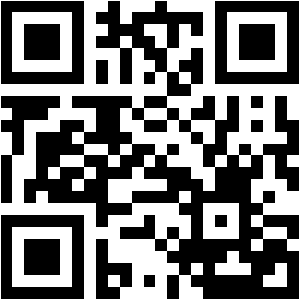CIS2017-N: Relational & NoSQL Database Assignment, TU, Malaysia Overview of the Selected Case Study and Associated Business Requirements
| University | Teesside University (TU) |
| Subject | CIS2017-N: Relational & NoSQL Database |
TASK A: Design
A1. Overview of the Selected Case Study and Associated Business Requirements: Consider the typical use cases for your selected case study and the associated business requirements. Describe the requirements and associated data you intend to focus on for this assessment. Ensure you select sufficient business functions to generate a model that contains 10-20 entities.
The key functional requirements will assist with the creation of the ERD in the next task and you may need to expand them after preparing the draft ERD to ensure that the scale matches the requirements of the assessment.
A2. Entity Relationship Diagram (ERD): Prepare an ERD for the selected business requirements. This is a design exercise that should be completed prior to the implementation. You may provide a series of mini or partial ERDs that when combined cover the full requirements.
A3. Partial ERD Views: Using the proposed solution for A2, produce 3-5 partial ERD diagrams that support key business functions. Clearly state the purpose of each partial ERD and the business function, any input parameters, and expected output.
TASK B: Implementation
For this task, you will be required to implement your design from Task A using SQL Server (MySQL). No need to create any user interfaces (forms) as we are only looking at the exploration of the backend server database technologies. Ensure you keep all your SQL Code as you will be required to submit it.
Each step of the implementation should be documented within the report produced during Task A and the SQL code should include appropriate comments.
Develop appropriate SQL Code to implement your design, including the following:
B1-B3: Demonstrate your understanding of implementing a database solution in SQL Server and SQL Data Definition Language (DDL)
B1: Create the SQL tables and relationships.
B2: Insert statements to populate the database with suitable test data. You can use online data generation tools or existing datasets to assist with this task. For the assessment, you only need 5 to 10 records for the main tables and fewer for lookup/category-type tables to prove the integrity of relationships. However, you are free to add more test data especially if it is via data generators or by importing from existing data sets.
B3: SQL Views to support the selected business functions (utilize the 3-5 partial ERDs from A3) (e.g. B3-view.sql)
B4-B5: demonstrate your understanding of interrogating a database by using SQL Data Manipulation Definition Language (DML)
B4: SQL Queries to support the selected business functions. Utilize the SQL Views and/or Tables. You are required to provide five examples.
Your SQL Code should be formatted to improve readability, include appropriate comments and be stored in clearly named files.
B5: SQL Server provides extensive capabilities for programming via Data Manipulation Language (DML). Provide 5 examples demonstrating the DML in actions. These should support the business functions but in the main, we are looking to see your capabilities of generating supporting SQL code.
B6: demonstrate your understanding of a critical appraisal of your work
B6: Provide a Critical Review of your database design and implementation. The Critical Review should also reflect upon your own performance in terms of strengths and areas to improve. Also, provide a self-assessment grade by using the marking criteria provided.
TASK C: Research into Emerging Database Technology
C1: Research NoSQL and one of the following topics – Big Data or SQL Business Intelligence or Internet of Things to create a short presentation covering:
• What is it all about?
• What are its uses if it?
• Useful Resources on the topic
Get Help By Expert
Looking for expert assignment assistance at Teesside University (TU)? Look no further than AssignmentHelper.my! We specialize in providing top-notch support for various academic tasks, including TMA, individual assignments, and group assignments. Our online exam helpers ensure you're well-prepared for assessments. For your CIS2017-N: Relational & NoSQL Database Assignment, we offer a comprehensive overview of the selected case study and associated business requirements. Trust AssignmentHelper.my for all your academic needs and excel with confidence.
Recent Solved Questions
- Portfolio and Risk Management Report, APU, Malaysia You are expected to read beyond textbooks and able to apply the knowledge gain from real life examples either from your working environment
- Programming Principle and Techniques Assignment, UIU, Malaysia You are working as a software engineer in a retail company named Auni Store Sdn Bhd. Your manager asked you to solve a programming
- Unit 3 – Strategic Management And Leadership, Assignment, Malaysia
- Design Thinking Assignment, TU, Malaysia I once attended a meeting with an entrepreneur and managers who were responding to a competitor’s new application launch
- Fundamentals Of Computer Problem Solving Assignment, UiTM, Malaysia Given a table of prices according to the type of dates. Request the type of dates, grade, and amount
- Operational Research Research Paper, TUE, Malaysia Identify suitable mathematical models based on different types of problems that exist related to appropriate approaches
- Commercial Law Essay, UKM, Malaysia Examining the Influence of Existing Regulation on the Increase of Electricity Theft due to Cryptocurrency Mining
- Unit 1 Assignment – Financial For Business V01.09.2024
- Facility Management Assignment, OUM, Malaysia Green retrofitting is acknowledged as an essential strategy for achieving long-term sustainability in the built environment
- BNNS6263: Haemopoietic & Oncology Nursing Assignment, LUC, Malaysia Haemophilia is a known genetic disorder in Malaysia, with about more than 1000 cases reported in 2018



